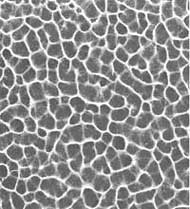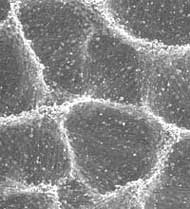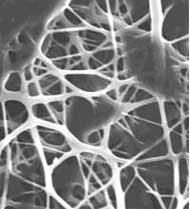| Posted: August 28, 2006 |
Researchers make chemical warfare protective nanofibers |
|
(Nanowerk News) While cotton may be the fabric of our lives, Texas Tech University researchers may have discovered a polyurethane nanofiber technique that can save lives.
|
|
Dr. Seshadri Ramkumar, an assistant professor at The Institute of Environmental and Human Health at Texas Tech, and graduate student Thandavamoorthy Subbiah recently discovered a honeycomb polyurethane nanofabric by using electrospinning. The nanofabric, created by exposing polyurethane to high voltage, can not only trap toxic chemicals, but also be used in a hazardous material suit.
|
|
Ramkumar’s findings are featured in the Sept. 5 edition of the Journal of Applied Polymer Science Self-assembled honeycomb polyurethane nanofibers The project was funded by the U.S. Department of Defense.
|
|
“These fibers are tiny,” Ramkumar said. “They’re about 1,000 times smaller than microfibres. We are able to develop honeycomb-like structures with this method, which makes a mesh within a mesh. This may not only provide increased surfaces area, but also can trap toxic chemicals more efficiently. These fibers are yet to be tested for their protection capabilities.”
|
|
Ramkumar and other researchers were able to observe self-assembled honeycomb nanomeshes that have not been reported before in the case of polyurethane nanofibers.
|
|
“This can be a very efficient filter against toxic chemicals, as well as a membrane for protecting people,” he said. “This will provide a significant boon to chemical protective clothing as well as a method to trap chemical warfare agents.”
|
   |
| These images, taken with an electron microscope, show how polyurethane nanofibers can create a honeycomb formation when hit with a high-voltage manipulation technique called electrospinning.
|



